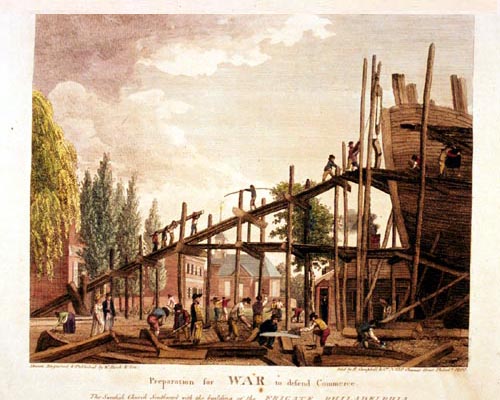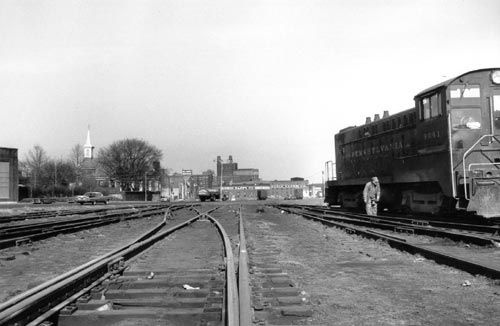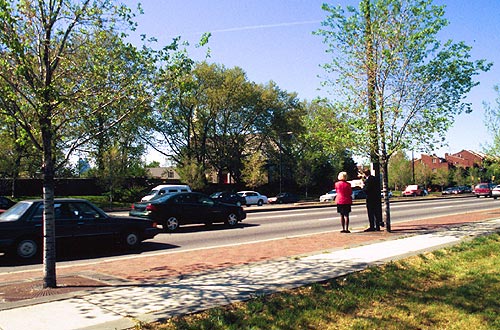Birch's lively scene depicts the building of the 28-gun frigate Philadelphia at the Wharton-Humphreys shipyard (foot of Federal Street near the Delaware River) in Southwark, 1798-99. The figure in a cutaway coat (FG-L) is believed to be either her builder, Joshua Humphreys, or her designer, Josiah Fox. William Rush, the now celebrated sculptor, did the carving work. Underwritten by a group of Philadelphia citizens, the warship was given to the nation's "infant navy" in "Preparation for WAR to defend Commerce." Several other cities also gave so called "subscription ships." After the Revolution, no longer having the protection of the British navy, the young nation mistakenly felt that armed protection of its merchant fleet was unnecessary. However, the pirates of North Africa changed that perception with their continuous depredations, as did the belligerent powers, Britain and France, who did not respect America's neutrality. In 1794, Congress finally recognized the need to build a navy and authorized the construction of six frigates. When France issued a decree in 1798 permitting attacks on American vessels, and a "Quasi-War" with her ensued, the building or procuring of additional warships, such as the Philadelphia, were authorized. The Philadelphia was commissioned in 1800 and put to sea for duty in the West Indies under the command of Captain Stephen Decatur. There she captured five French armed vessels and recaptured six merchant ships that had fallen into French hands. During the war with Tripoli in October 1803, with Captain William Bainbridge in command, the Philadelphia ran aground off Tripoli. All efforts to refloat her failed and she was surrendered to the enemy who imprisoned the officers and men. In February 1804, Stephen Decatur leading a party of volunteers, with great daring, boarded and burned her. In 1800-01 the federal government bought the Wharton-Humphreys shipyard site and adjoining lands for a Navy Yard that operated there until 1879 when it was moved to League Island. The Pennsylvania Railroad then purchased the land for a freight yard. Old Swedes Church ("Gloria Dei") (BG-C), the city's oldest church, was built by Swedish Lutherans 1698-1700 (now an Episcopal church).
Photographs
The 1960 photograph shows the Pennsylvania Railroad yard still functioning. Construction of the Delaware Expressway in the early 1970s (between Front Street and Delaware Avenue, renamed Columbus Boulevard around 1992), brought many changes to the area. The factory buildings have been replaced by town houses. The freight yard and its waterfront are now being used by the U.S.Coast Guard, the city's marine police and fire boats and The Sheet Metal Workers, Local 19. Columbus Boulevard has become tree lined with landscaped islands. Penn would have rejoiced in this "greening" of his "Country Towne."
Back Next




